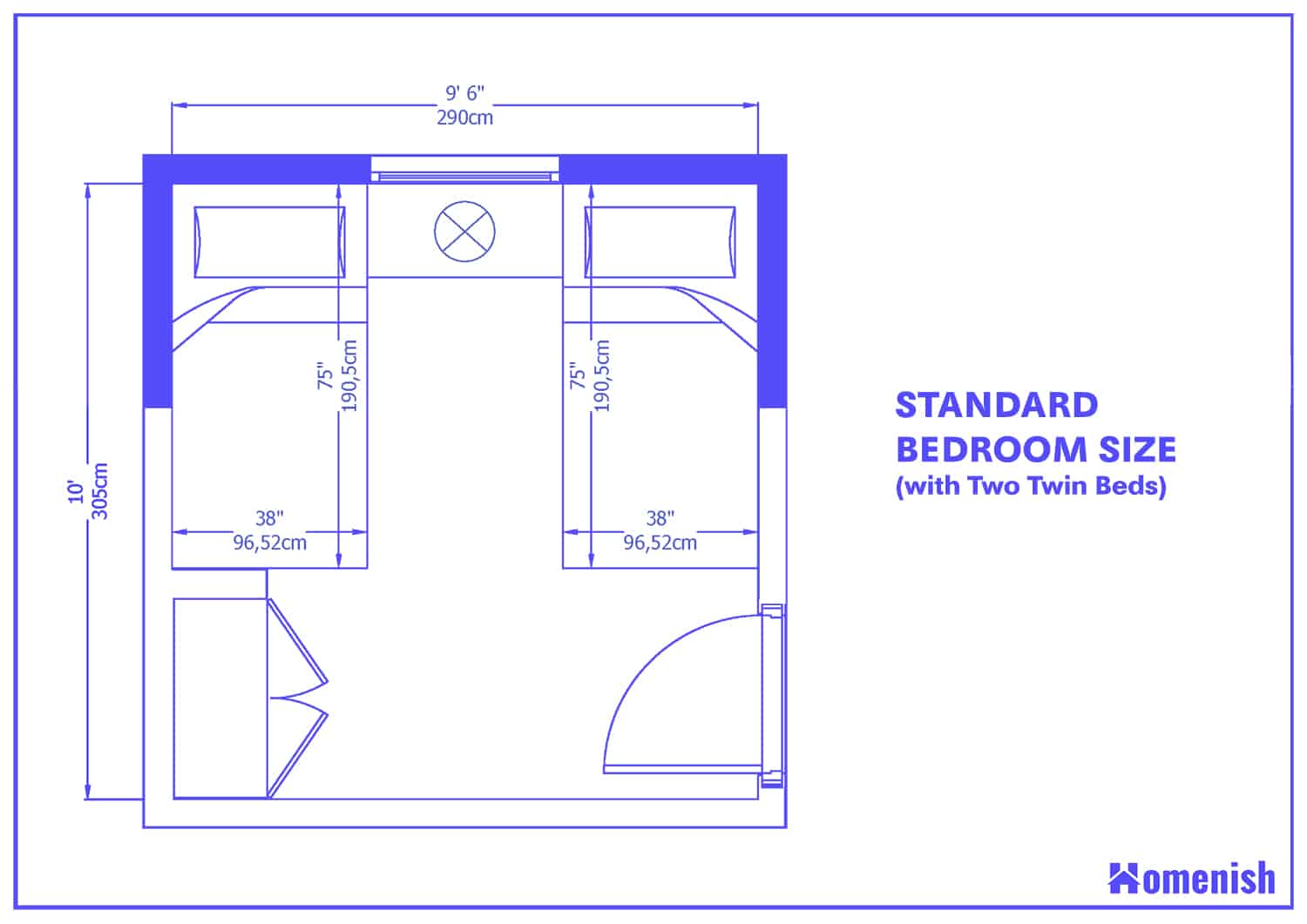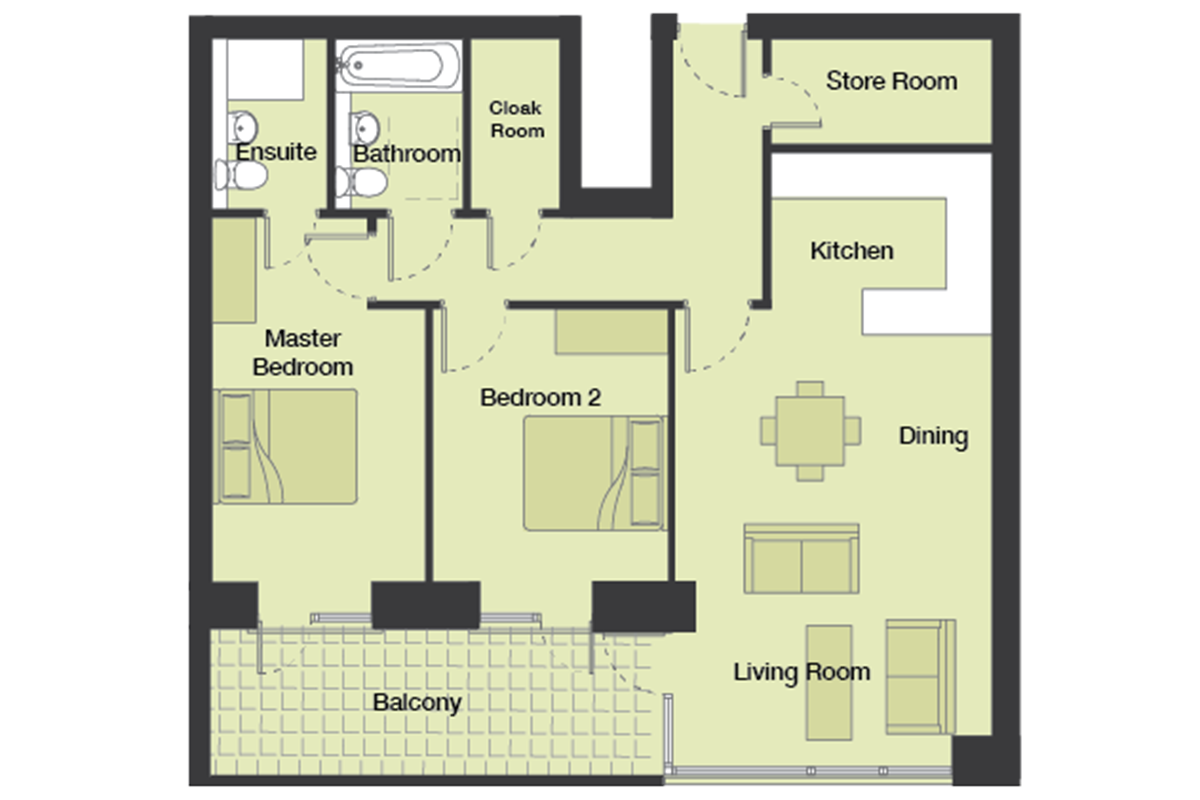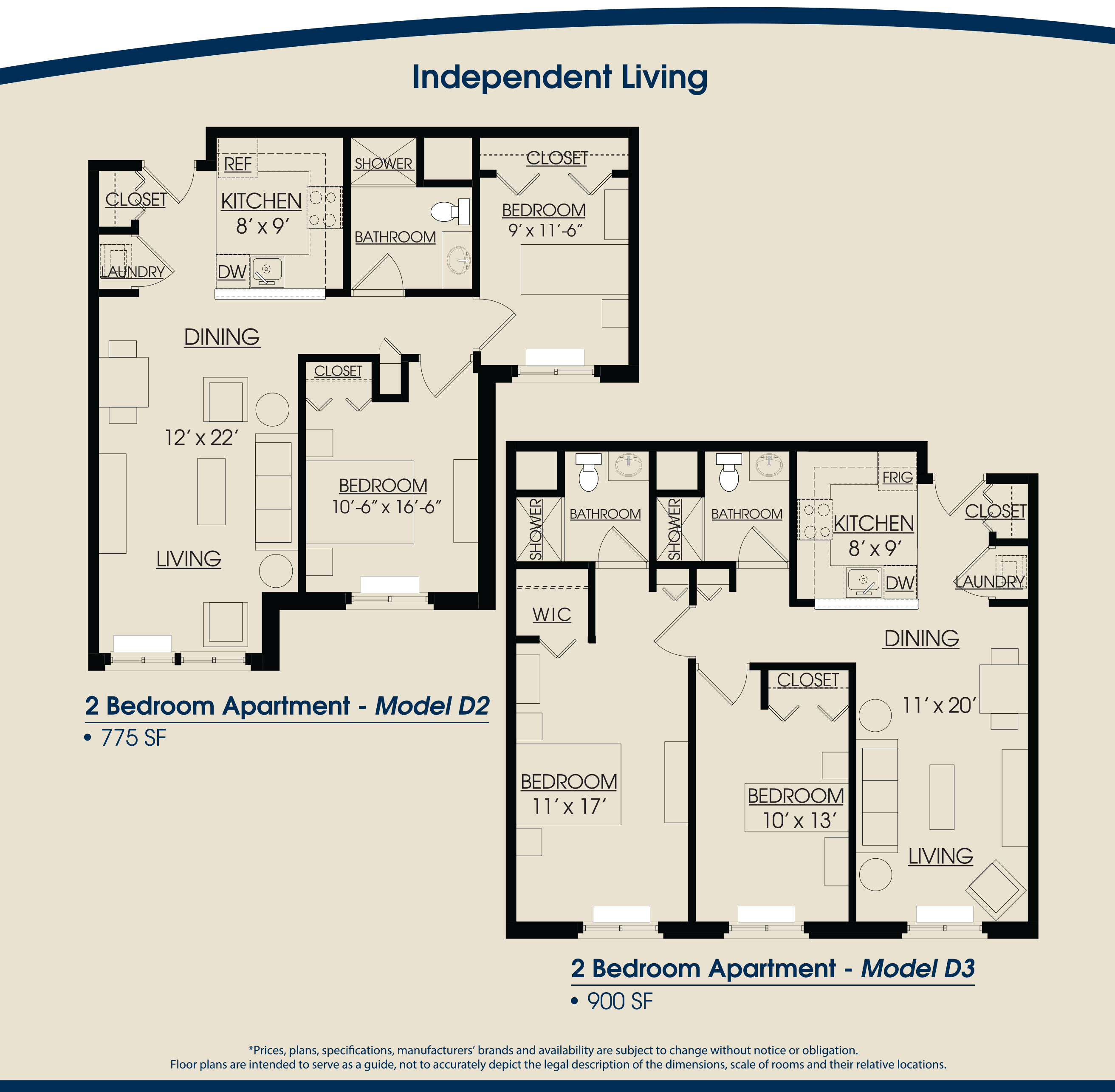Understanding Typical 2-Bedroom Apartment Sizes: Typical 2 Bedroom Apartment Size

The size of a 2-bedroom apartment can vary greatly depending on its location and the building’s age. However, there are some general guidelines to help you understand what to expect.
Average Square Footage
The average square footage of a 2-bedroom apartment can vary significantly across different cities and regions. This is largely influenced by factors like cost of living, population density, and local building codes.
- Major Metropolitan Areas: In major cities like New York, Los Angeles, or San Francisco, a 2-bedroom apartment can range from 800 to 1,200 square feet. However, in certain neighborhoods within these cities, apartments may be smaller, particularly in older buildings.
- Suburban Areas: In suburban areas, 2-bedroom apartments tend to be larger, often ranging from 1,000 to 1,500 square feet. This is because suburban areas often have less dense populations and more affordable housing options.
Space Allocation
The square footage of a 2-bedroom apartment is typically allocated across different living spaces in a specific way. Here’s a breakdown of how the space is typically distributed:
- Bedrooms: Each bedroom typically occupies 100 to 150 square feet, depending on the overall size of the apartment. A larger apartment may have larger bedrooms.
- Living Room: The living room is usually the largest room in the apartment, often taking up 200 to 300 square feet.
- Kitchen: The kitchen typically occupies 100 to 150 square feet, depending on its layout and features.
- Bathroom: A standard bathroom is typically around 50 to 75 square feet.
- Other Spaces: The remaining square footage is usually allocated to hallways, closets, and other common areas.
Size Comparison: Metropolitan vs. Suburban
A 2-bedroom apartment in a major metropolitan area is typically smaller than a similar apartment in a suburban area. This is because land prices are higher in cities, which often leads to smaller living spaces.
For example, a 2-bedroom apartment in Manhattan, New York, might be 800 square feet, while a similar apartment in a suburb of New York City could be 1,200 square feet or larger. This difference in size is reflected in the rental or purchase prices, with suburban apartments generally being more affordable.
Factors Influencing Apartment Size

The size of a 2-bedroom apartment is influenced by a variety of factors, including the age of the building, its location, and the amenities it offers. Let’s explore these factors and how they shape the living space of a typical 2-bedroom apartment.
Building Age
The age of a building plays a significant role in determining apartment size. Older buildings, particularly those built before the mid-20th century, tend to have smaller apartments compared to newer buildings. This is partly due to changes in building codes and design standards over time. For instance, pre-war apartments in New York City are known for their smaller layouts, often featuring smaller bedrooms and kitchens. Conversely, newer buildings often prioritize spacious living areas, larger bedrooms, and more modern amenities.
Location
Location is another crucial factor influencing apartment size. Apartments in highly desirable areas, such as bustling city centers or waterfront locations, often command higher prices and tend to be smaller. This is due to the limited availability of land in these prime locations. Conversely, apartments in less popular or more suburban areas may be larger due to lower demand and more affordable land prices.
Amenities
The availability of amenities in a building can also impact apartment size. Buildings offering extensive amenities, such as swimming pools, fitness centers, and concierge services, may have smaller apartments to accommodate these facilities. Luxury buildings with extensive amenities often prioritize communal spaces over individual apartment size, leading to smaller units. Conversely, buildings with fewer amenities may offer larger apartments with more spacious living areas.
Number of Bathrooms
The number of bathrooms in a 2-bedroom apartment significantly impacts its overall size. Apartments with two full bathrooms generally have larger square footage than those with one bathroom. The additional bathroom space adds to the overall living area, creating more comfortable and functional living arrangements.
Luxury vs. Standard Buildings
A typical 2-bedroom apartment in a luxury building will generally be larger than one in a standard building. This is due to the higher standards and expectations associated with luxury living. Luxury buildings often prioritize spaciousness, high-end finishes, and premium amenities, which translates to larger apartment sizes. Standard buildings, on the other hand, focus on providing functional and affordable housing, resulting in smaller apartment sizes.
Implications of Apartment Size

Apartment size has a significant impact on various aspects of daily life, from comfort and convenience to social interactions and overall well-being. A larger apartment provides more space for personal belongings, furniture, and activities, while a smaller apartment offers a more compact and potentially more affordable living experience.
Apartment Floor Plan Design, Typical 2 bedroom apartment size
This section explores a typical floor plan design for a 2-bedroom apartment with an average square footage of 900 square feet. The design prioritizes functionality and efficient use of space.
- Living Room: Located at the front of the apartment, this room serves as a central gathering space and typically includes a sofa, coffee table, and entertainment system.
- Kitchen: The kitchen is usually adjacent to the living room, featuring a refrigerator, stove, oven, sink, and ample counter space.
- Dining Area: A dedicated dining area is often integrated into the kitchen or living room, providing a space for meals and gatherings.
- Bedrooms: Two bedrooms are designed to accommodate comfortable sleeping arrangements and personal belongings.
- Bathrooms: A standard 2-bedroom apartment typically includes one or two bathrooms, featuring a toilet, sink, and shower or bathtub.
- Hallway: A hallway connects the various rooms and provides a central access point to the apartment.
Furniture Arrangement in a 2-Bedroom Apartment
The following table illustrates typical furniture arrangements for each room in a 2-bedroom apartment:
| Room | Furniture |
|---|---|
| Living Room | Sofa, coffee table, entertainment system, end tables, lamps, rugs |
| Kitchen | Refrigerator, stove, oven, sink, dishwasher, microwave, dining table, chairs |
| Dining Area | Dining table, chairs |
| Bedroom 1 | Bed, nightstands, dresser, desk, chair, closet |
| Bedroom 2 | Bed, nightstands, dresser, closet |
| Bathroom | Toilet, sink, shower or bathtub, vanity, mirror, towel rack |
Comparison of Small and Large 2-Bedroom Apartments
This section provides a visual representation comparing the layout of a small 2-bedroom apartment (approximately 700 square feet) to a larger one (approximately 1,100 square feet).
The smaller apartment features more compact spaces, with less room for furniture and personal belongings. The larger apartment offers more spacious rooms, allowing for greater flexibility in furniture arrangement and overall living comfort.
Small 2-Bedroom Apartment:
* Living Room: The living room is relatively small, accommodating a sofa, coffee table, and entertainment system with limited space for additional furniture.
* Kitchen: The kitchen is compact, featuring a small refrigerator, stove, oven, and sink.
* Dining Area: The dining area is integrated into the kitchen or living room, with a small dining table and chairs.
* Bedrooms: The bedrooms are relatively small, with minimal space for furniture and personal belongings.
* Bathroom: The bathroom is compact, with a toilet, sink, and shower or bathtub.
Large 2-Bedroom Apartment:
* Living Room: The living room is spacious, accommodating a larger sofa, coffee table, entertainment system, and additional furniture.
* Kitchen: The kitchen is spacious, featuring a larger refrigerator, stove, oven, sink, and ample counter space.
* Dining Area: The dining area is separate from the kitchen or living room, with a larger dining table and chairs.
* Bedrooms: The bedrooms are spacious, with ample room for furniture and personal belongings.
* Bathroom: The bathroom is spacious, with a toilet, sink, shower or bathtub, and additional storage space.
While the typical 2 bedroom apartment size can vary, often ranging from 800 to 1,200 square feet, those seeking a more spacious and luxurious option might consider 2 bedroom suites in Pompano Beach, FL. These suites often offer larger living spaces, private balconies, and upscale amenities, providing a more expansive and comfortable living experience.
While a typical 2-bedroom apartment might hover around 800-1000 square feet, those seeking a more spacious and luxurious vacation experience can consider 2 bedroom villas in Orlando near Disney. These villas often offer significantly more living space, private pools, and resort-style amenities, providing a more expansive and comfortable alternative to a traditional apartment.
